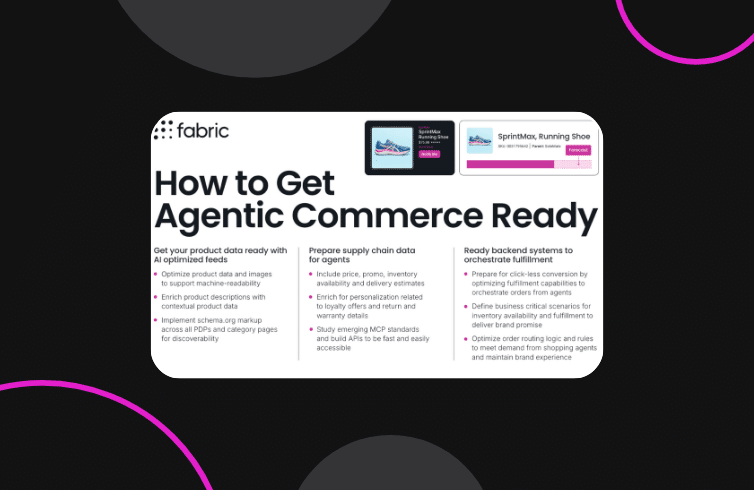AI Search: Not Just Another Demand Channel

CommerceNext in New York was buzzing with energy this year. I had the opportunity to lead two roundtables, while our CEO, Mike Micucci, moderated a panel on preparing for agentic AI in retail with Umesh Sripad (CDO & CTO, PetMeds), Laura Cantor (VP of Marketing, New York and Company), and Aaron Magness (CMO, Full Glass Wine Co.). Throughout the three days in Manhattan, conversations consistently reflected a sense of curiosity about the future of commerce as AI becomes increasingly integrated. Amid all the discussion, one comment resonated with me: “I feel like AI search is just another demand channel that we’ll adapt to.”

As someone who’s actively researching the retail space and how AI can and will shape the next wave of innovation, I found myself asking, “Am I an AI alarmist?!” After careful thought, some follow-up discussions, and sitting in on presentations from the conference, I can safely say, no, I’m not an AI alarmist. There is a major shift happening, and it’s happening really fast.
In this blog, I’ll explain why I’m confident in the coming wave of agentic commerce innovation and how brands and retailers should prepare for it. Because it’s already started, as millions of people and e-commerce consumers use AI search to research and discover products.
You can track the billions of dollars invested in this technology by major tech players like OpenAI, Google, Microsoft, and Amazon. And, by pure logic, assume that these global tech companies are all hellbent on figuring out how to get people to shift from search and discover to find and buy within their ecosystems.
I started one roundtable I hosted with a quote that I think sums up the shift nicely: “Search engines no longer have the monopoly on user intent.” And this sudden shift at the top of the sales funnel represents the thin wedge that AI search needs to drive a change in behavior and reshape how consumers discover, find, and buy products. Let’s dive in!
The decline of traditional search in commerce
Retailers have felt the symptoms: traffic from traditional search is tapering. In May 2025, ecommerce-related Google searches declined nearly 10% year over year, remaining consistent with single-digit declines every month since January 2024. These aren’t seasonal blips — they’re signals of behavior migrating elsewhere.
Why? Because users are increasingly turning to AI platforms for product discovery, not just information retrieval. Consider this: ChatGPT’s user base has at times seen growth of 1 million users per hour (OpenAI, 2025). Meanwhile, according to Similarweb, platforms like Perplexity and Gemini have seen double-digit traffic growth month over month since Q1 2024.
And the most telling stat? A visitor referred to a DTC website by ChatGPT is currently 4x more likely to convert than one from Google or Meta — a staggering boost in signal quality that underscores just how high-intent these sessions are.
AI isn’t just another demand channel
The temptation for brands might be to categorize AI platforms as simply “new demand channels.” But that framing misses the point. AI search isn’t a parallel to SEO or paid ads. It is something categorically different — a shift toward agent-based commerce, where AI doesn’t just assist, it acts.
66% of U.S. adults say they’d be comfortable allowing an AI agent to purchase products or services on their behalf.
(Statista, 2025)
This brings enormous implications:
- AI doesn’t “search and click.” It reasons, evaluates constraints, and makes decisions based on logic, loyalty, terms of service, and inventory availability.
- When AI becomes the buyer (on behalf of a human), it needs clean, structured data, not bloated PDPs or clunky filters.
- Retailers can no longer rely solely on UX to convert users. They must design for machines that buy.
Preparing for the agentic commerce future
As AI matures, we’re entering a future where both buyers and sellers are represented by agents. A personal AI — like ChatGPT or Gemini — might soon search, recommend, and purchase autonomously. On the other side, seller-side agents will be responsible for making inventory, pricing, and fulfillment visible and machine-actionable. This emerging loop — Agent-to-Agent (A2A) commerce — demands that retailers re-architect how they publish, price, and fulfill.
Here’s how to prepare:
1. Get products discovered — agentic search starts with clean data
AI-driven commerce begins long before checkout — it begins at discovery. But in agentic search, discovery isn’t visual, it’s data-driven:
- Enrich product descriptions with structured, contextual metadata (e.g., use cases, features, compatibility).
- Add machine-readable tags to images and videos so that AI can parse product use and function visually.
- Implement schema.org markup on PDPs and category pages to enable discoverability by AI crawlers.
In this world, PDPs are no longer just for humans — they’re signals for machines. Your content needs to speak both languages.
2. Shape demand through real-time supply chain data
AI agents don’t just pick the first product; they factor in availability, delivery promise, and cost to serve. This is where supply chain visibility becomes a commerce driver, not just an operational concern:
- Expose Available-to-Promise (ATP) inventory and Estimated Delivery Dates (EDD) dynamically.
- Offer real-time views into pricing, promotions, loyalty rewards, return policies, and warranty terms.
- Shape demand in real time by surfacing inventory based on proximity and availability, not just popularity, guiding agents to what can be fulfilled fast, efficiently, and profitably.
This is intent-to-expectation matching at a new level — and it can help avoid deadstock, increase margin, and reduce shipping costs.
3. Orchestrate orders with intelligence and efficiency
Once a buyer agent commits, the expectation is instant execution. To support this:
- Prepare for click-less conversion — the agent may place the order directly into your system.
- Orchestrate fulfillment smartly — avoid routing an order from San Mateo that ships from Maine when there’s inventory in a store in Los Angeles.
- Refine order routing rules to optimize for agent-based behaviors, factoring in speed, cost, and brand promise.
This isn’t just about making a sale — it’s about delivering frictionless post-purchase experiences that agents will learn to prioritize over time. If the agent trusts your reliability, it becomes your repeat customer.
4. Build for standards that will shape the future
Protocols like MCP (Model Context Protocol) may define the rules of AI commerce. Retailers don’t need to deeply engineer for it today, but they do need to:
- Understand how exposed APIs will drive decision-making.
- Ensure product, price, and promo data are fast, accessible, and structured for third-party agent consumption.
- Track how platforms like Shopify, Amazon, and marketplaces adopt these specs, because they will dictate participation in agentic ecosystems.
Final thoughts: mutual benefit is the key
Ultimately, the adoption of AI commerce agents by both consumers and retailers will only succeed if both parties benefit. If AI only helps buyers but leaves sellers behind, the gap will be too great to reach mass adoption. But if both sides win, through more efficient discovery, higher conversion, smarter personalization, and fewer returns, then we won’t just see incremental gains; we’ll witness the emergence of a new form of digital commerce.
And the brand promise becomes even more critical and more achievable in this scenario. When executed well, AI enables brands and retailers to deliver on their commitments faster, more consistently, and at scale. From delivery timelines to loyalty rewards and product relevance, AI offers the tools to reinforce trust at every stage of the journey.
Commerce won’t just be faster. It will be smarter, more accountable, and more aligned with the brand values that matter most.
Retailers don’t need to boil the ocean right now. But they do need to:
- Audit their product and supply chain data.
- Structure content for agent-based discovery.
- Refine inventory exposure and fulfillment orchestration.
- Track emerging standards like MCP and A2A protocols.
- And most importantly: design for a world where AI is doing the buying.
This isn’t about chasing the next channel. It’s about being ready for the next customer — and their agent.
—
Ready to power agentic commerce with confidence? fabric’s reimagined AI-powered OMS, paired with Smart Order Routing and Unified Inventory Management, equips you to meet every AI-driven demand with speed, precision, and profitability. See how it all comes together by requesting a demo to preview these new, upcoming orchestration capabilities.

Director, Product Marketing @ fabric





